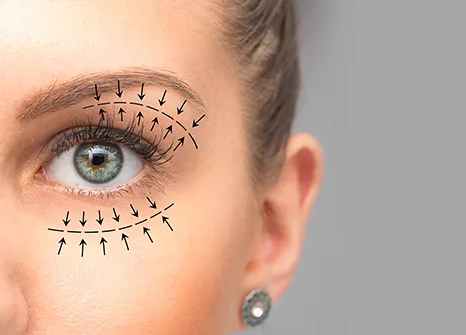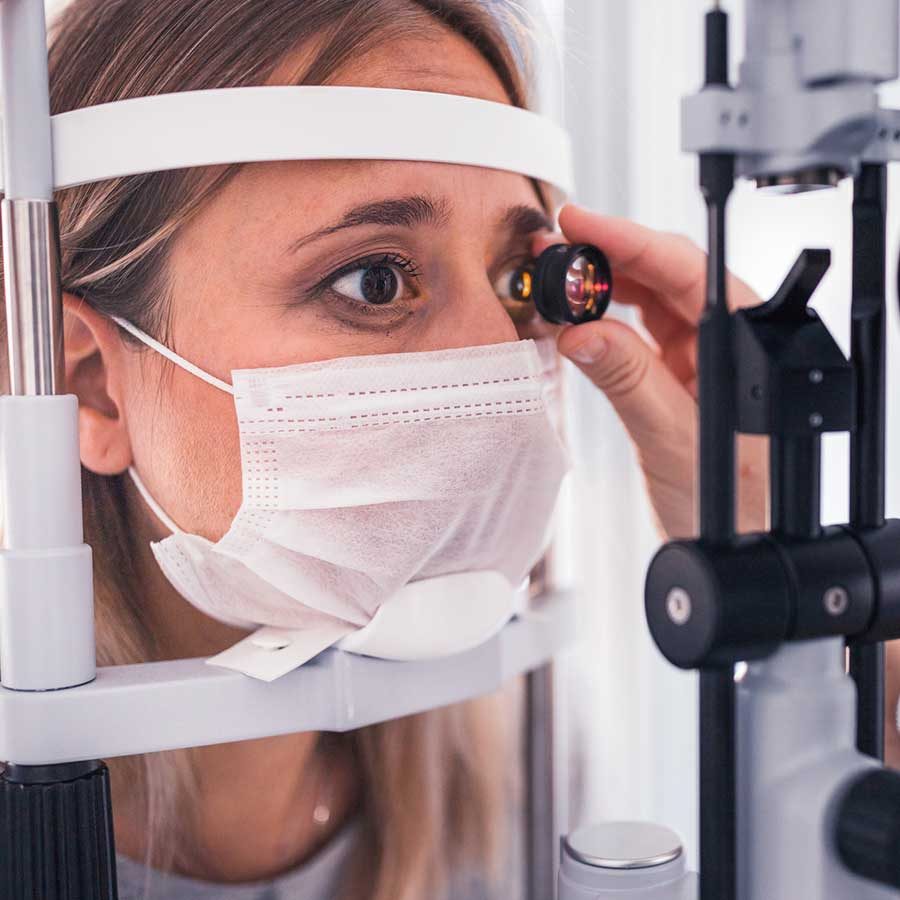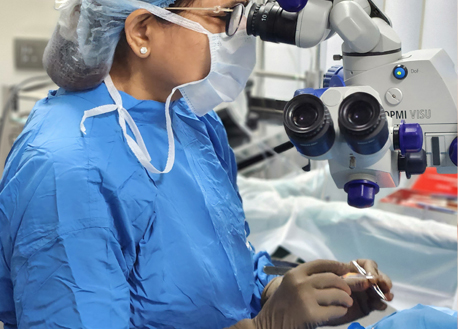Oculoplasty addresses various lid conditions, aiming to correct functional issues and improve the aesthetic appearance of the eyelids. Some common lid conditions treated with oculoplasty include:
- Ptosis (Drooping Eyelids): Ptosis is a condition where the upper eyelid droops lower than normal, potentially affecting vision. Oculoplastic surgery can involve tightening the levator muscle or attaching the eyelid to the forehead muscles to improve lid elevation.
- Entropion (Inward-Turning Eyelids): Entropion occurs when the eyelid turns inward, causing the lashes to rub against the eye. Surgical correction involves repositioning the eyelid to prevent irritation and discomfort.
- Ectropion (Outward-Turning Eyelids): Ectropion is the outward turning of the eyelid, leading to exposure of the eye’s surface. Oculoplastic surgery can address this condition by tightening the lower eyelid to return it to its normal position.
- Eyelid Tumors: Oculoplastic surgery is often employed to remove benign or malignant tumors affecting the eyelids while preserving the function and aesthetics of the eye.
- Blepharoptosis (Functional Eyelid Drooping): Functional eyelid drooping can be caused by various factors, including aging or muscle weakness. Oculoplastic surgery, such as blepharoplasty, can help lift and rejuvenate the eyelids.
- Eyelid Retraction: Eyelid retraction occurs when the eyelids are abnormally elevated, exposing more of the eye than usual. Oculoplastic procedures can be performed to correct the position of the eyelids.
- Blepharospasm: Blepharospasm is involuntary eyelid closure or blinking. While medical management is often the first line of treatment, oculoplastic interventions may be considered in severe cases.
- Blepharitis: Chronic inflammation of the eyelids, known as blepharitis, can lead to discomfort and irritation. Oculoplastic procedures may be recommended to manage persistent cases.
- Eyelid Reconstruction: Oculoplastic surgery is commonly utilized for eyelid reconstruction after trauma, injury, or surgical removal of tumors. Reconstruction aims to restore both functionality and aesthetics.
- Congenital Eyelid Abnormalities: Some individuals are born with eyelid abnormalities or asymmetry. Oculoplastic surgery can address congenital conditions to improve lid function and appearance.
- Eyelid Laxity: Eyelid laxity, often associated with aging, can lead to sagging and reduced support. Oculoplastic procedures, such as canthoplasty, can be performed to address laxity and enhance eyelid support.
- Cosmetic Concerns (Blepharoplasty): Cosmetic eyelid surgery, known as blepharoplasty, is a common oculoplastic procedure to address concerns such as excess skin, fat deposits, and wrinkles around the eyes for aesthetic improvement.
The choice of oculoplastic procedure depends on the specific lid condition, its severity, and the individual patient’s goals. A consultation with an experienced oculoplastic surgeon is crucial for a personalized assessment and treatment plan.
Are you searching for a skilled and caring Ophthalmologist in Andheri? Look no further than Dr. Seema, your trusted eye care specialist dedicated to preserving and enhancing your vision.




